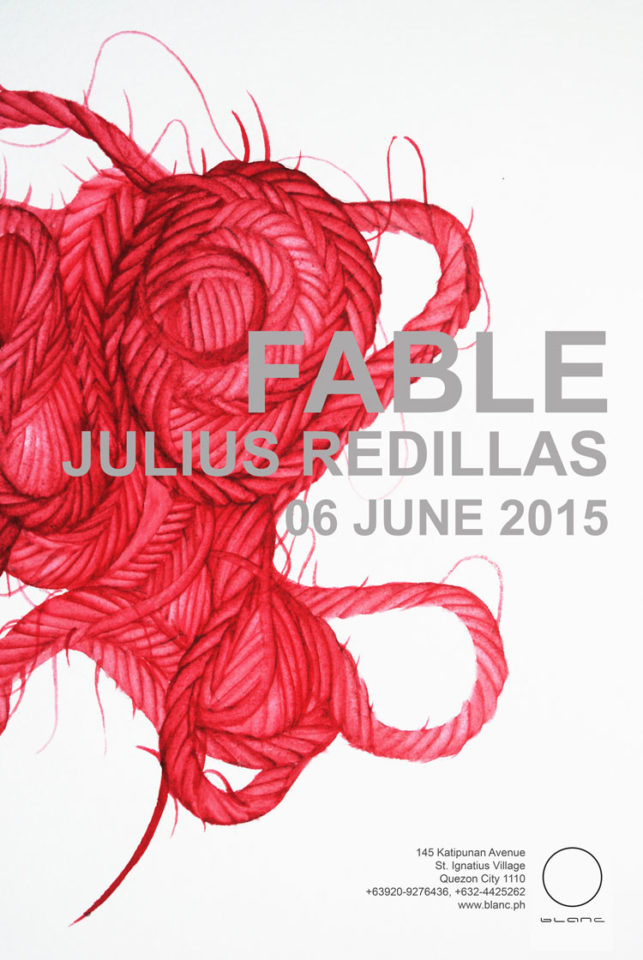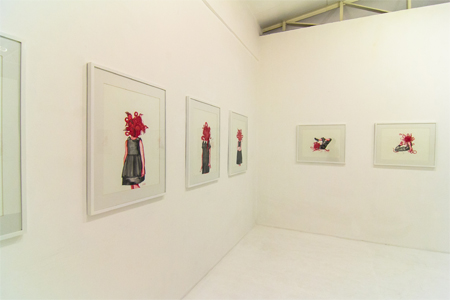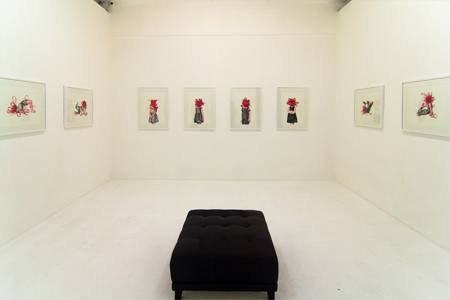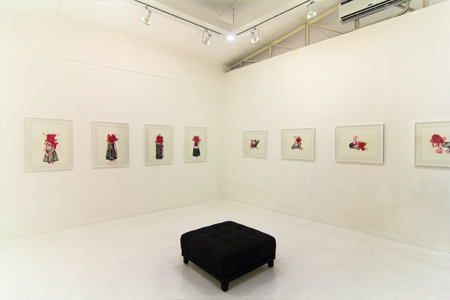
JULIUS REDILLAS
FABLE
‘The creatures outside looked from pig to man, and from man to pig, and from pig to man again; but
already it was impossible to say which was which.’
Orwell’s ‘Animal Farm’ critiqued a cult of personality and the brutal dictatorship shrouded by it. The
latest solo exhibition by Julius Redillas ‘Fable’ delves into a different phenomenon of personality cult.
It is a continuation of the artist’s exploration of the recurring central theme in his works which is
social identity.
In the contemporary setting, the prevalence of shaping and reshaping identities exist as best
exemplified by all things absurd, awkward, and at times amusing, that social media radiates. The fame
craze that involves it can be seen in trends such as the Ice Bucket Challenge, Harlem Shake, Cutting for
Bieber, and the list goes on. The willingness to do something, anything, to be popular or to belong,
has never been so rampant. The crazier, the better. ‘There’s no such thing as bad publicity except your
own obituary.’
It is amusing to see a coincidental congruency in Redillas’ artistic technique and his inspiration for this
exhibition. His technique cleaves to Viktor Shklovsky’s concept of ostranenie —the desensitization of
the familiar in a peculiar way without destroying familiarity—and the dystopian novel which his
inspiration was anchored, were both forms of subversion to authority. ‘Fable’, on the other hand,
inquires on authorship of the self. How Redillas translates how people’s facades as a concept create
barriers to its viewers is quite interesting. The images are reminiscent of those found in children’s
books thus the clean, almost calculated, illustrative look sans gestural strokes or washes which
supports the idea of an authoritarian hand.
While fables feature anthromorphism, Redillas’ ‘Fable’, at least visually, does the opposite,
zoomorphism. Serving as the pivot among the three series, ‘Species’ shows Raggedy Ann-inspired
figures doing animal poses. In ‘Beings’, animal parts protrude from supposed human heads which are
almost fully covered by hair. An orgy of mammals engulfed in huge furballs makes up the central
figures in ‘Flock’.
As one of the defining attributes of mammals, hair also symbolizes sexual identity formations and
shifts in social affiliation. Redillas appears to have developed a case of trichophilia or hair fetishism as
there is an abundant serving of hair in each work. He chose hair as a symbol of identity and self to act
as the thread that sews and unites the three series.
There is something scary with the use of a doll as referenced in ‘Species’. It is scary because dolls
appear to resemble men’s callousness to pain and violence so much. (It is not hard to find them cute
at the same time, though.) The chosen poses of the characters also has some sort of violence in it
which seems to strengthen this scary concept of animals transforming into humans or vice versa. It
could be a commentary on how mankind’s long history of violence made men inclined to being
violent, in different aspects and degrees, even to themselves. As the character of Alan Turing in the
film ‘Imitation Games’ says: men enjoy violence because it feels good, but remove the satisfaction,
and the act becomes hollow.
As for intent, there is nothing didactic about the works. One cannot really say that they are amoral
either. Despite the Orwellian reference, Redillas was successful in his intent to not appear political. It
is philosophical. The success mainly lies in the subtlety in his attack of the subject. ‘Fable’ asks us, its
viewers, to collate our public image and social media behavior against our respective individual values
and purpose. It might show that our facades are a prison cell or a sanctuary. In the case of the latter,
it can be viewed as a byproduct of a masochistic disposition in the face of the excesses of social
media.
The soundness of these possible encoded premises and the questions surrounding them is a thing to
be reflected on. Redillas does not want to be in the position of judging the morality or sanity of our
individual and collective facades. He does, however, want us to experience the sheer aesthetic delight
the entire exhibition offers, then pause and ask ourselves a question Friedrich Nietzsche wrote in the
aphoristic ‘Human, All Too Human’: “Error has transformed animals into men; is truth perhaps capable
of changing man back into an animal?”
— Richard Coronel
WORKS
DOCUMENTATION




















